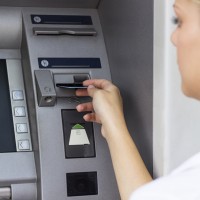
The Future of Multiple Banks

The idea of having accounts with multiple banks is a recent one that appears to be gaining popularity. Only a few decades ago, most customers were loyal to one bank as opposed to spreading their wealth among several banks. However, with the Great Recession, loyalty to one bank seems like a thing of the past. Today, customers decide to open a checking or savings account with more than one financial institution for a variety of reasons. Read on to find out more.
History
Back when Baby Boomers were in their twenties, it was practically unheard-of to have bank accounts with multiple banks. Most people opted to bank with financial institutions that were close to where they lived, going to the branch regularly to do their banking. During this era, customers were likely to be on a first-name basis with tellers and bank managers, who they interacted with regularly. That all changed in the 1990s, when branches began downsizing in favor of online banking. New customers were encouraged to do their banking from their home. Even if they did occasionally visit their local branch, they were less likely to feel loyalty to that particular branch or even bank. As online and mobile banking platforms surged in popularity in the years to come, customers no longer maintained a personal connection to their bank. Loyalty became a thing of the past, with customers embracing the idea of having multiple accounts to suit their own needs.
Predictions
As interactions with financial institutions become digitized, customers will continue to branch out – literally. The customers of the future, including the Millennial generation, are not afraid to do what is best to suit their own needs. If having a bank account at more than one financial institution offers them particular benefits that they cannot find elsewhere – such as better rates, fewer costs, and added convenience – they will opt for it.
Pros
 There are a number of benefits to having bank accounts with more than one institution. Some customers find it influences them to spend less, through holds on transfers between accounts. Putting money into a savings account at a different institution can help customers to “forget” about the money, making them less likely to see it when they check their balance and have the urge to spend. Another common benefit is the option to get a better rate at a different institution. Finally, some customers simply seek the added convenience and flexibility of having money in more than one account – they can access more Automatic Teller Machines with cards from two institutions, use the accounts for different purposes, or keep emergency funds tucked away.
There are a number of benefits to having bank accounts with more than one institution. Some customers find it influences them to spend less, through holds on transfers between accounts. Putting money into a savings account at a different institution can help customers to “forget” about the money, making them less likely to see it when they check their balance and have the urge to spend. Another common benefit is the option to get a better rate at a different institution. Finally, some customers simply seek the added convenience and flexibility of having money in more than one account – they can access more Automatic Teller Machines with cards from two institutions, use the accounts for different purposes, or keep emergency funds tucked away.
Cons
The major con of keeping your money with more than one banking institution is adding up banking fees and trying to stay organized. You may feel it’s easier to manage your money when it’s all in one place. In addition, if you’re careful you may end up paying extra for products and services at either bank that you don’t actually need.







